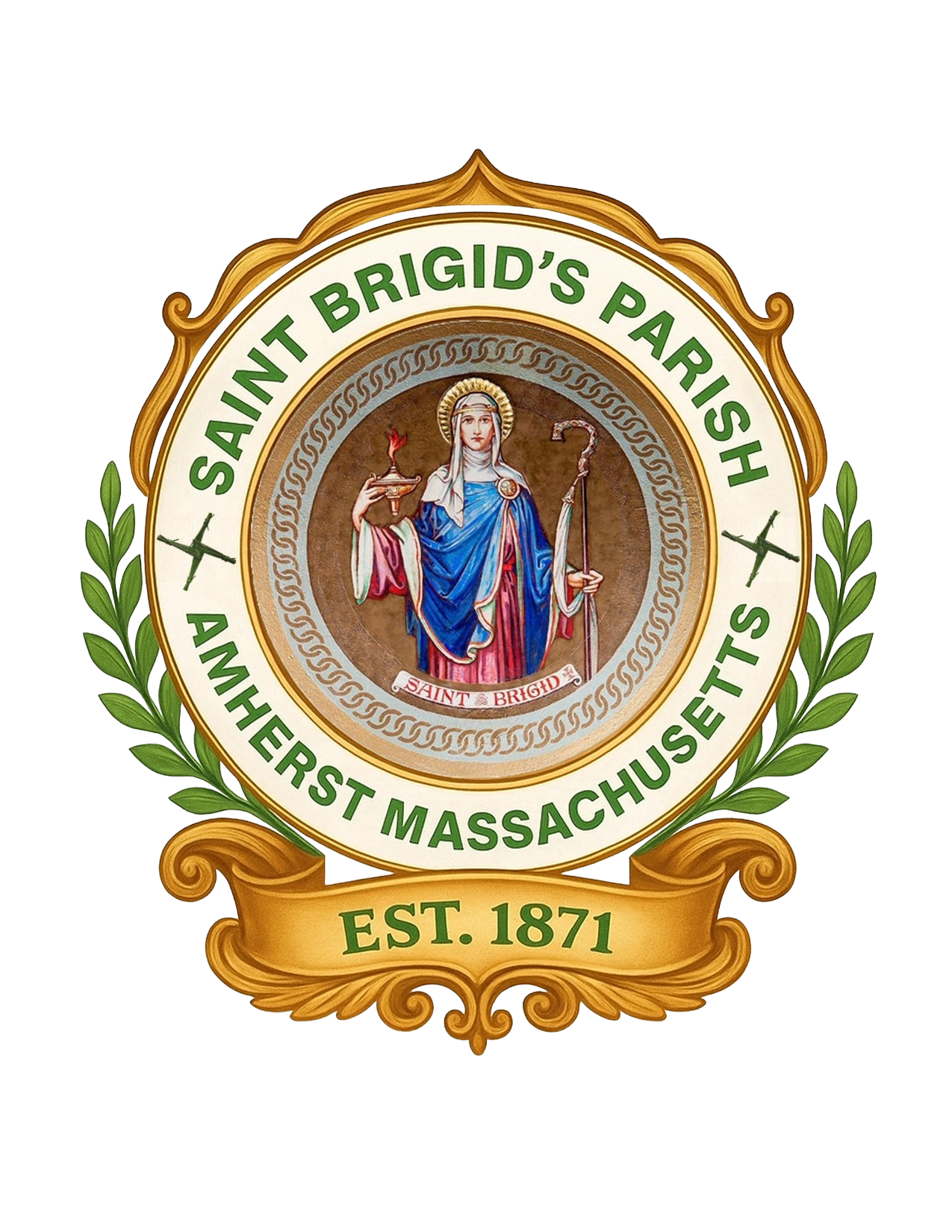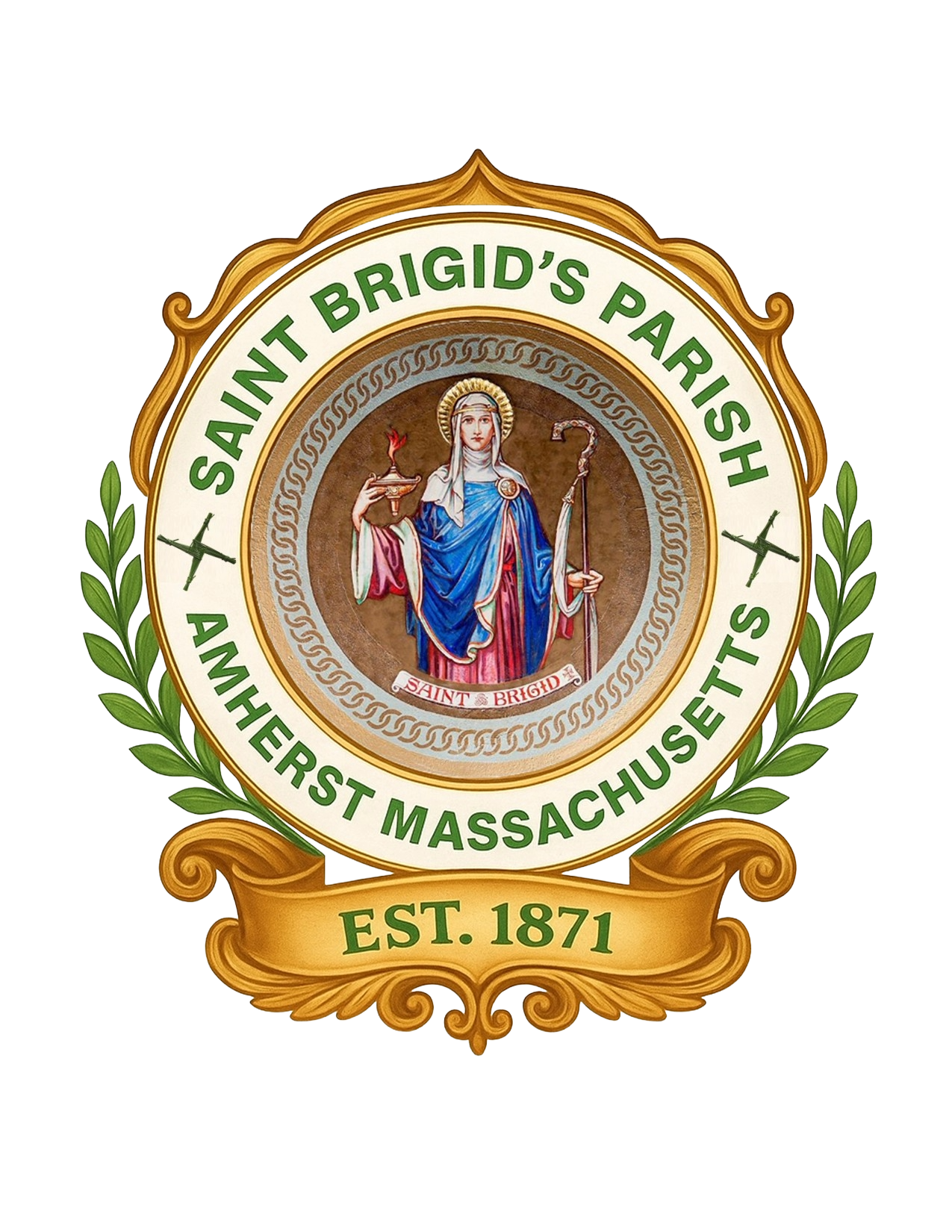Our History
St. Brigid's Church
A BRIEF HISTORY
Originally, the Catholic Church in what is now the eastern part of the United States of America was administered as part of the Diocese of London. In 1784, Pope Pius VI created the “Prefecture Apostolic of the United States”. This in turn became the Diocese of Baltimore in 1789. This Diocese covered the entire United States (as it existed in 1789), basically the current continental United States east of the Mississippi River, except for Florida. In 1808 Pope Pius VII created three new Dioceses from the Diocese of Baltimore. One of the new Dioceses was the Diocese of Boston, covering all of New England.
The start of the Catholic Community in Amherst, Massachusetts, was best summed up in
Tales of Amherst: A Look Back (1986): “In 1840 the man considered the first Catholic to settle in Amherst arrived. John Slater … came to Amherst at a time when as later reported, ‘Amherst had a charm for all but the Catholics’…” (p. 26). Prior to the founding of the parish, Catholic Masses were held in various places in Amherst, including Palmer’s Hall, the current site of the Town Hall.
The parish was founded in 1871 – a year after the Diocese of Springfield was set off from the Diocese of Boston. That same year the first Church was dedicated. Originally named “St. Bridget” after the Swedish saint, that Church was sold in 1927 and subsequently incorporated into the Cathedral Apartments on the west side of the intersection of North Pleasant Street and Triangle Street.
100th Anniversary Celebration
St. Brigid's Church
1925-2025
We invite you to view our recently published book celebrating the 100th anniversary of the St. Brigid's Church building that captures a century of moments with rich visuals and unique history that bring the past to life.
The glossy photos of St. Brigid's Church gives you a tour of the building, then and now, showing how values and style evolved while our community ties stayed strong.
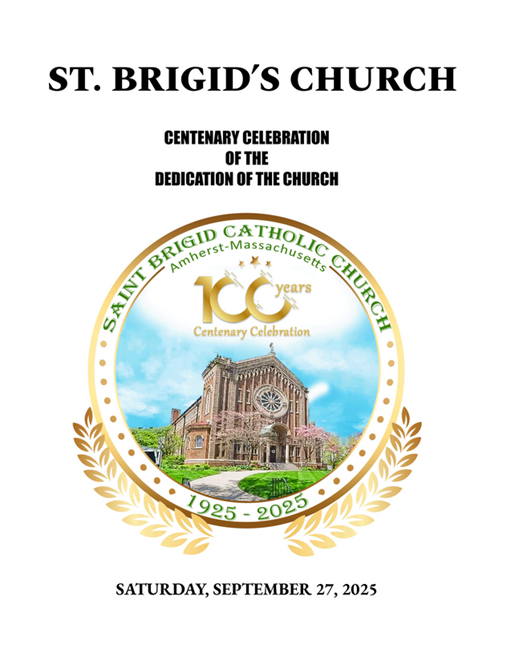
The beginning of the current church started in 1919, when the Bishop of Springfield purchased two lots on North Pleasant Street and Cowles Lane from Fannie W. Baggs on May 1, 1919. The Bangs Center in Amherst is named in honor of Fannie W. Bangs and her husband Edward D. Bangs. It should be noted that all land of the Diocese of Springfield is owned by the Bishop of Springfield, not individually, but as a corporate sole established by Chapter 368 of Acts and Resolves of 1898 of the Massachusetts Legislature.
The cornerstone of the current Church was laid in 1923. To finance the project, two mortgages were taken out by the Bishop: a mortgage for $90,000 on January 11, 1924 and another mortgage for $20,000 on January 6, 1925. According to one source, $110,000 in 1925 dollars is $1,983,000 in 2025 dollars. Both mortgages were discharged on January 28, 1943, a testament to the hard work of the parishioners, who at that time period (1924 to 1943) were mostly working-class people.
The Church was dedicated on September 27. 1925 and re-named “St. Brigid” by Bishop Thomas Michael Leary, the Third Bishop of Springfield. On July 29, 1947, an additional parcel was added to the property. This parcel was at the corner of North Prospect Street and Cowles Lane and later became the site of the Monsignor Lane Pastoral Center.
In 1993 the Church, under the direction of Fr. John Roach, underwent a major renovation (seen in progress in the photo). During this time Mass was held in the Monsignor Lane Center.
In 2023 many of St Brigid programs, such as CCD, were merged with the Newman Catholic Center.
Under the administration of Fr. Gary Dailey and subsequent administration of Fr. Valentine Nworah, additional renovations were undertaken, including the installation of a new organ. Today (2025) St. Brigid’s continues to serve the greater Amherst Catholic Community.
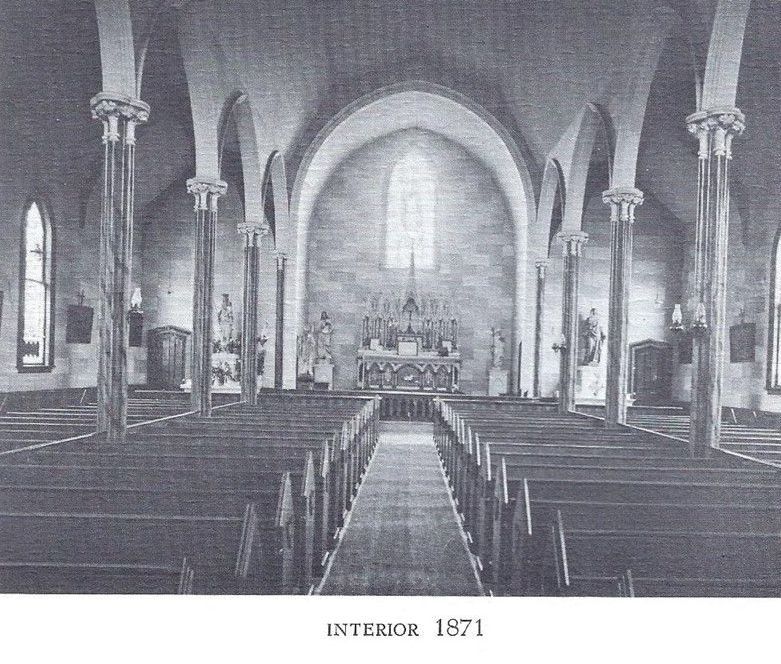
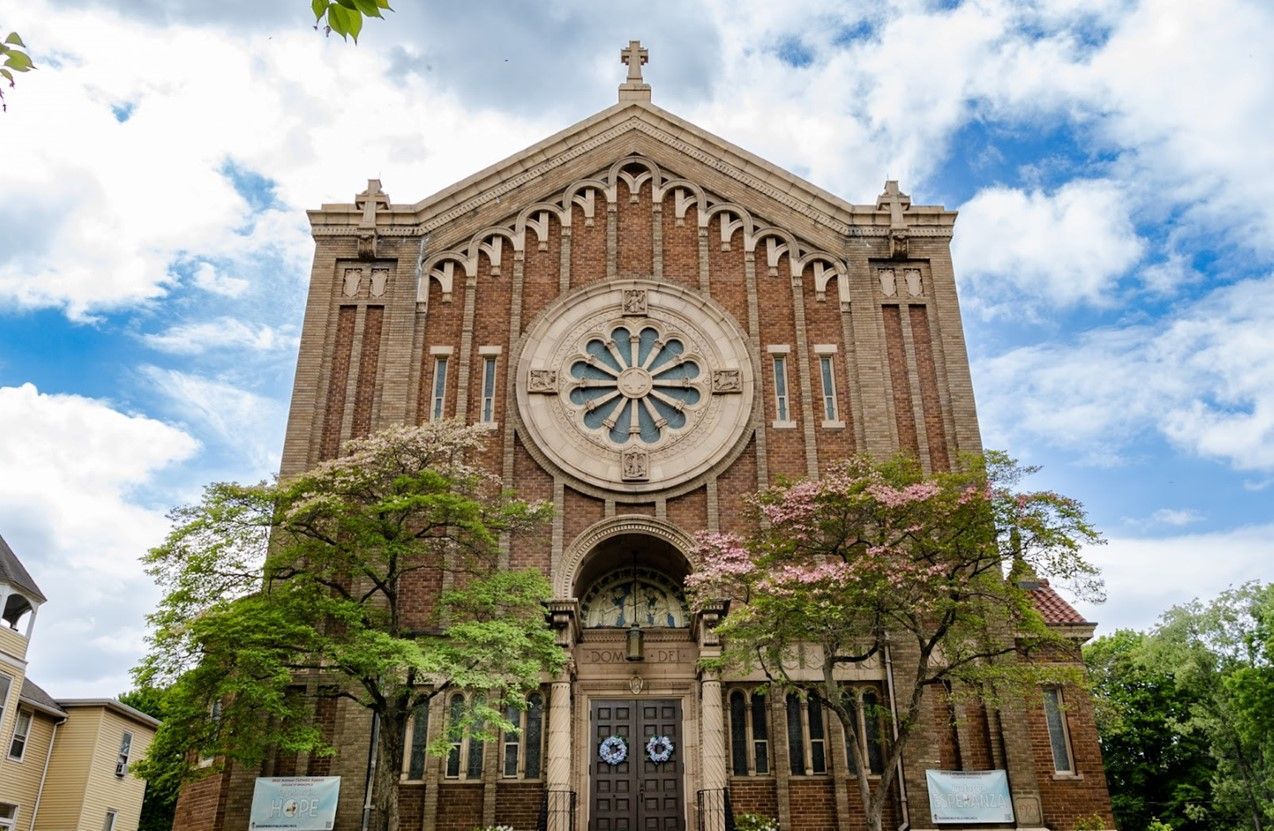
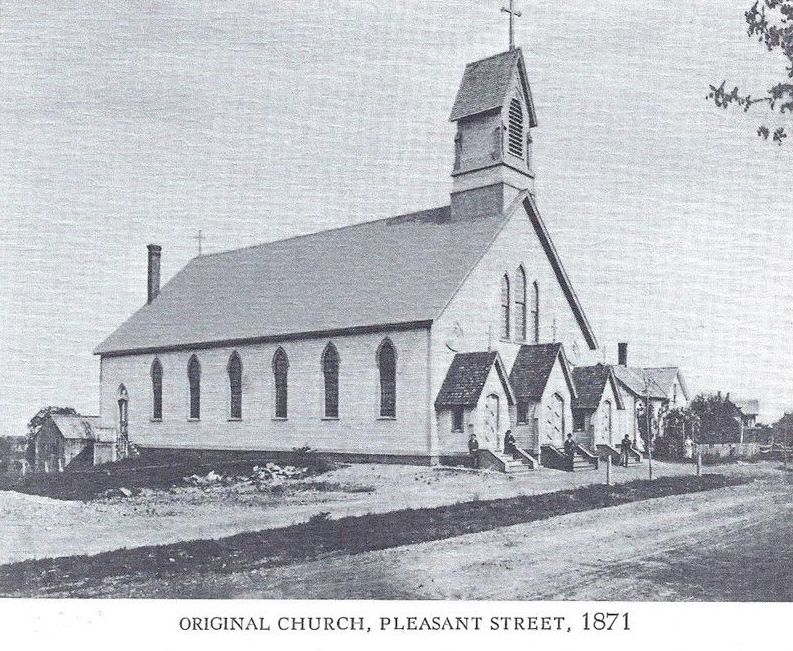
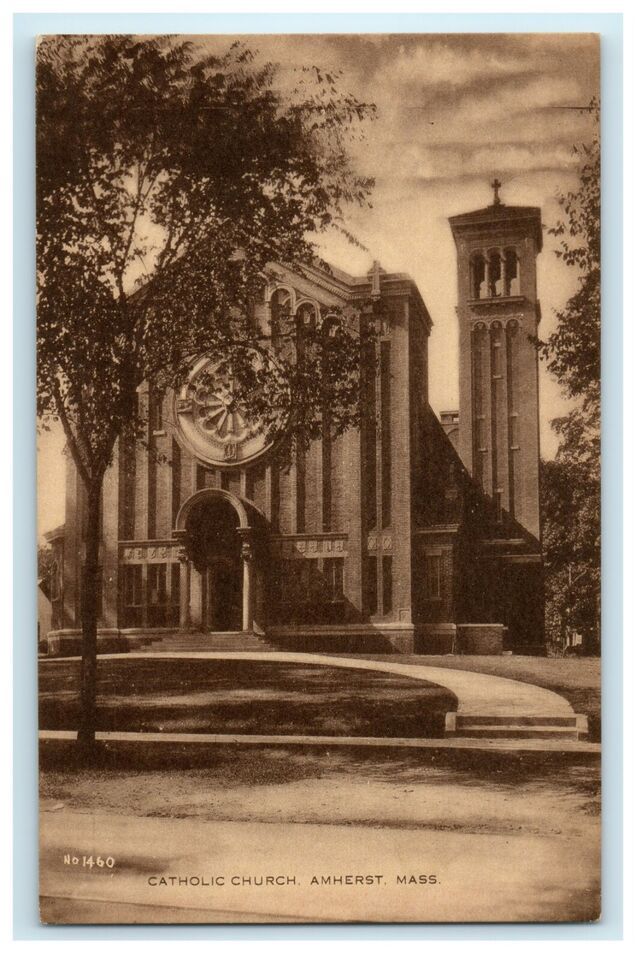
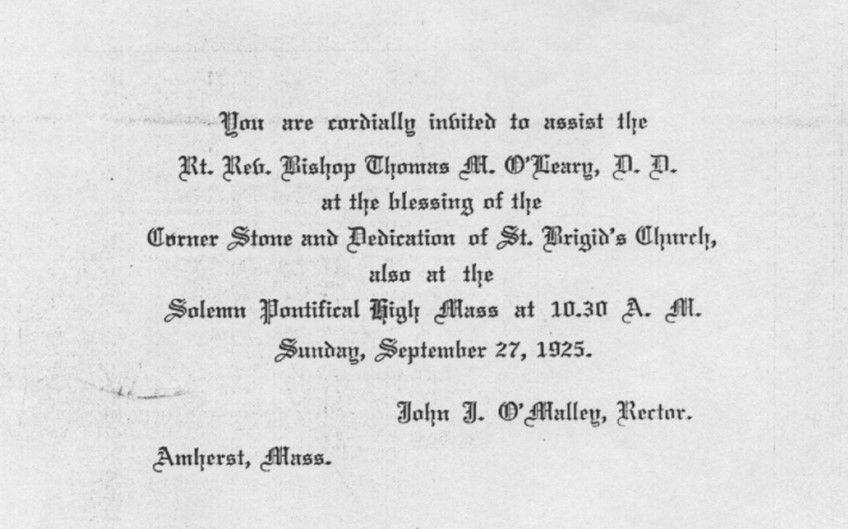
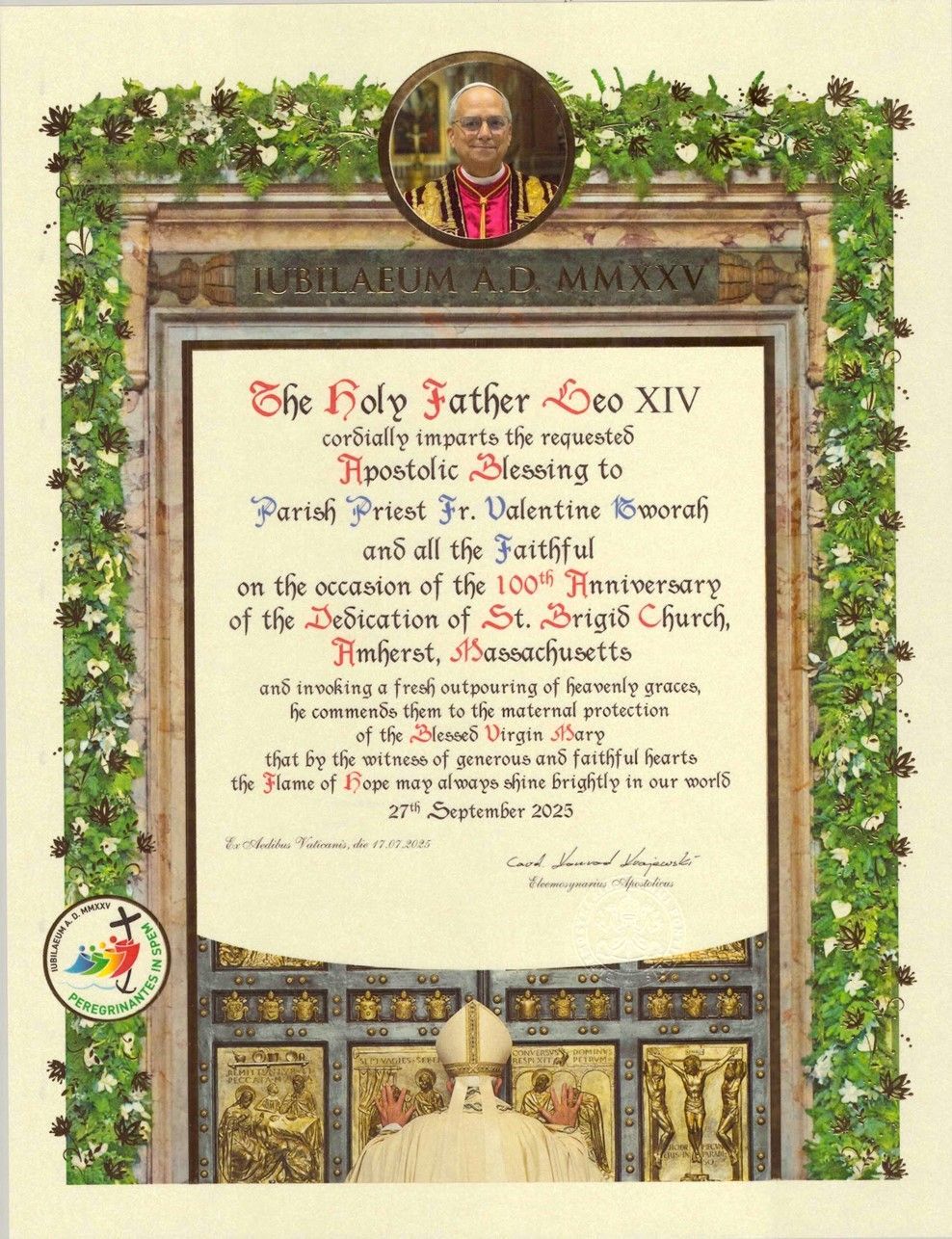
Fun Facts About September 27, 1925
100 years ago, when St. Brigid’s was first dedicated, although there were many things about the world that would still be familiar to us today, there were many ways in which it was very different.
The Catholic Church
● The Pope was Pope Pius XI, who reigned from February 6, 1922 to February 10, 1939.
● All Catholic Mass were said partially in Latin.
● There were no Saturday Masses to satisfy a Catholic’s weekly obligation
● Catholics were forbidden to eat meat on Fridays throughout the year – not just during Lent.
● Three priests were assigned to serve the St. Brigid’s community.
● The Bishop of Springfield was Thomas Michael Leary, who served as the third Bishop of Springfield from September 8, 1921 to October 10, 1949.
● In 1925, the Diocese of Springfield included the following Massachusetts Counties: Berkshire, Franklin, Hampden, Hampshire and Worcester. On January 14, 1950 Pope Pius XII created the Diocese of Worcester which includes all of Worcester County.
Amherst and the Country
● Two former residents of Amherst held high office at the time:
Calvin Coolidge was serving as President of the United States. He served as President from August 3, 1923 to March 4, 1929. President Coolidge was an Amherst College graduate and lived in town during his time at the college. Calvin Coolidge is the only President of the United States to be born on July 4 (in 1872).
Harlin Fiske Stone spent most of his youth in Amherst and graduated from Amherst College in 1894. He became a New York City attorney and was appointed an Associate Justice of the Supreme Court of the United States (by his college friend President Coolidge) and took his seat on March 2, 1925. He served in this capacity until July 3, 1941 when he was sworn as Chief Justice of the Supreme Court and served in that capacity till his death on April 22, 1946. Before attending Amherst College, Justice Stone attended Massachusetts Agriculture College (the predecessor of the University of Massachusetts at Amherst), but was expelled after getting into a scuffle with an instructor. One wonders if this scuffle did not occur if Chief Justice Stone would have pursued a legal career that ended in the Supreme Court of the United States.
● The 1920 census had the population of Amherst, Massachusetts at 5550 as compared to the over 40,000 persons who call Amherst home today.
● There were two colleges in Amherst in 1925. Amherst College and Massachusetts Agriculture College, which became Massachusetts State College in 1931 and subsequently became the University of Massachusetts in 1947.
● Alvan T. Fuller was Governor of Massachusetts from January 8, 1925 to January 3, 1929. The term of the Governor of Massachusetts at that time was two years. The term was increased to four years effective the 1966 election.
● Both Alaska and Hawaii were not states, but United States Territories. Alaska was admitted as a state on January 3, 1959 and Hawaii was admitted as a state on August 21, 1959. Accordingly, on this date the American Flag had 48 stars instead of the 50 stars we see on today’s flag.
Technology
● Most homes had only three electronic devices: electric lights, a telephone and a radio.
● There were no televisions, no internet, no computers, no Facebook and no YouTube.
● If you wanted to watch a movie you went to a theater and saw a “silent movie” that is a movie with no sound and title cards instead of spoken dialogue.
● One of the most popular cars was the Ford Model T.
